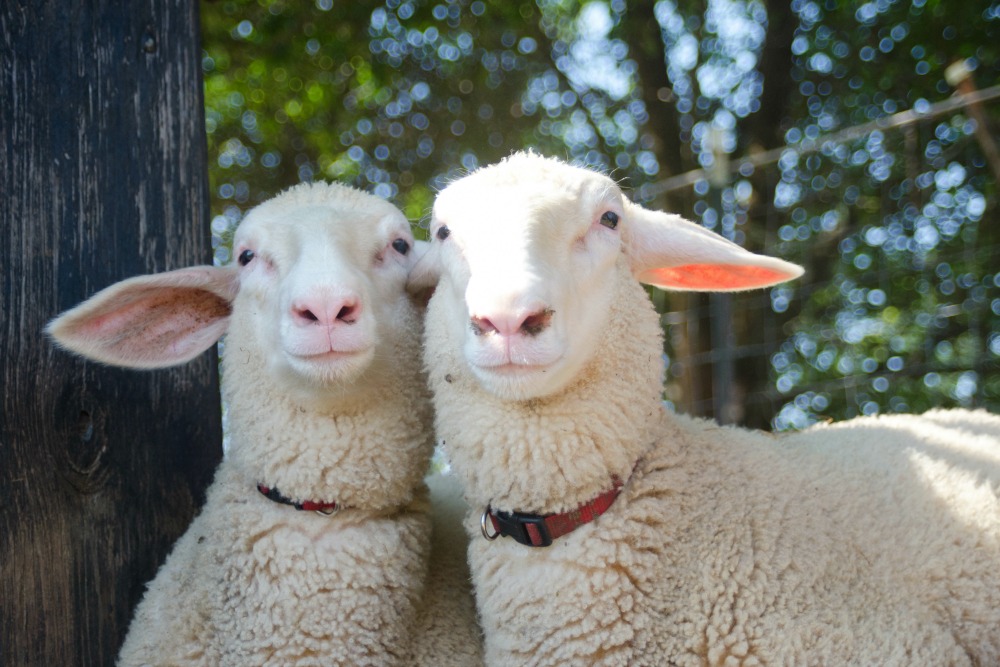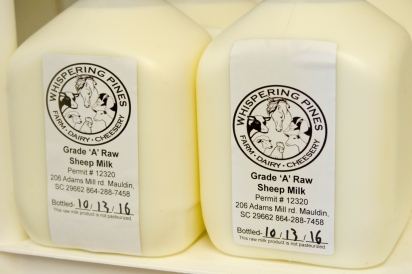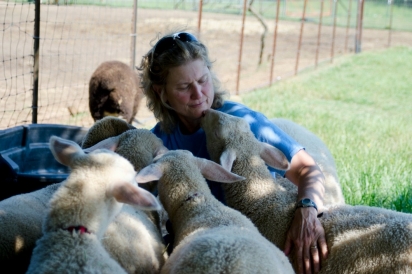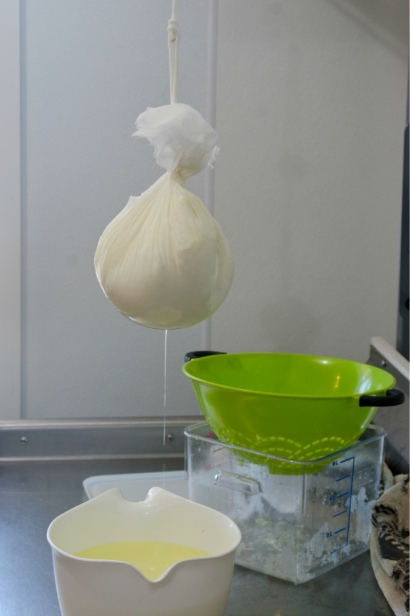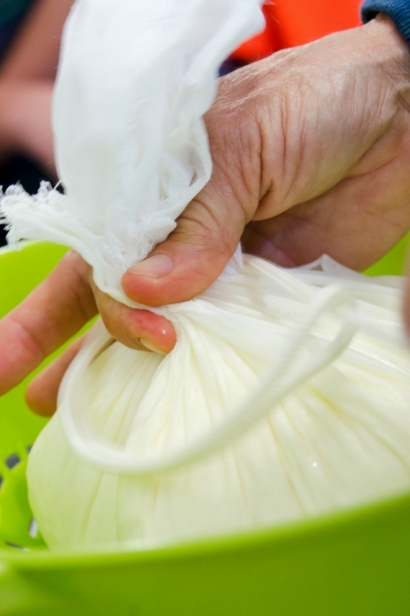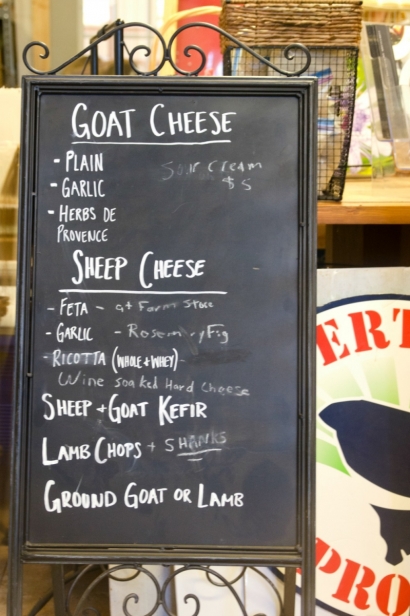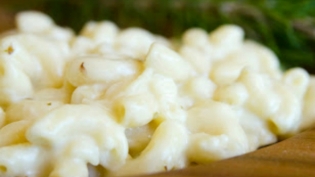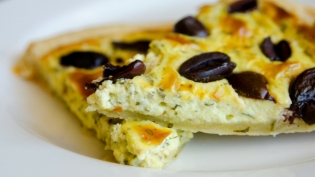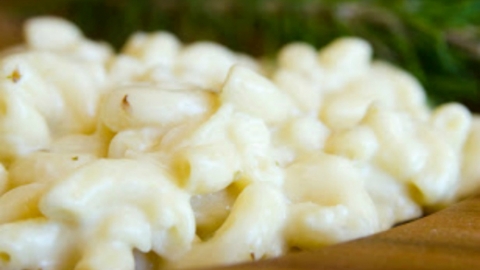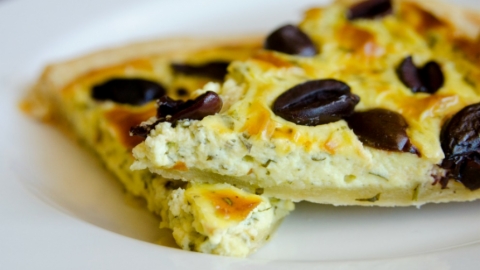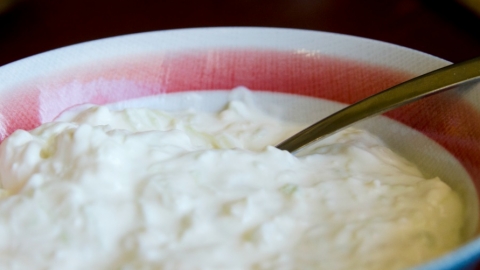Meet the Sheep Behind Your Local Cheese
Mauldin sheep farmers sell fresh sheep’s milk products and DIY cheesemaking kits at their on-farm store.
If you’ve lived in the Upstate for a long time, sheep’s milk cheese probably isn't the first thing that comes to mind when you think of the intersection of Butler Road and 276 in Mauldin. But just a mile away from this busy thoroughfare lies Whispering Pines, a 25-acre farm and stable where Debbie and Alan Webster are breaking new ground for dairy sheep in South Carolina.
A professional horse trainer, judge and educator, Debbie started working with sheep almost 20 years ago when she purchased some lambs for a live Christmas nativity. At first they were just pets. But over time Debbie developed an interest in their potential as sources of meat, dairy and fiber. Now she has a flock of 50 adult sheep with just as many, if not more, lambs on the way this spring.
Debbie’s operation is unusual because dairy sheep are a rarity in the United States. While there are more than 47,000 cow dairies and more than 3,000 goat dairies, there are only about 100 sheep dairies in the entire country. Compared to cows and goats, sheep have a shorter milking season, produce less milk and are more difficult to milk. But the end product is well worth the effort—due to its higher fat and protein content, sheep’s milk yields rich, creamy yogurt and cheese that’s not only flavorful but also easily digestible.
The Whispering Pines flock consists of mostly East Friesian sheep, a dairy breed that originated in Holland and Germany. White-faced and white-fleeced, East Friesians are prized for their long milking season—more than 200 days—and high milk volume. Tunis sheep comprise the remainder of the flock; while they’re not a traditional dairy breed Debbie is exploring the possibilities of crossing them with the East Friesians to increase production.
My first visit to the farm takes place in late May, during the tail end of lambing season. As we tour the facilities, Debbie explains her breeding program to me. The gestation period for sheep is about five months, so she breeds her ewes in late fall for spring lambing. That way she can avoid having lambs on the ground during January and February when cold, wet conditions can mean a quick death from exposure for a newborn. And just like vegetable farmers plan succession plantings of the same crop to guarantee a continuous harvest, Debbie staggers her lambing to extend her milking season from mid-March through mid-October.
Like most dairy farmers, Debbie takes about three-quarters of her lambs off the ewes a week or two after they're born and bottle feeds them. Even though it’s more work than letting their mothers do the job, the practice offers several benefits. Bottle feeding makes it easier to ensure that the lambs are getting enough milk and are in good health, and they’re easier to work with as adults since they’ve been handled regularly. Removing the lambs also contributes to better udder health for the ewes and fewer cases of mastitis, a painful and sometimes life-threatening infection that occurs when the udder isn’t drained entirely and the milk ducts become plugged.
I witness first hand just how friendly the bottle babies are when Debbie ushers me into a small paddock and introduces me to several yearling lambs. The average sheep is rather standoffish and wary of people. But these lambs—Zorro, Daisy, Madi, and Hope—immediately crowd around Debbie, nibbling on her clothes and fingers. The bond between shepherd and flock is on display as Debbie crouches down and embraces the lambs, scratching their heads and petting their fluffy backs. “I’m kind of crazy about my babies,” she says, and it seems that the feeling is mutual.
As much as she loves her sheep, Debbie’s plans for growing her cheesemaking business require some difficult flock management decisions. She wants to have 20 “super milkers,” ewes that give more milk with higher protein and fat content. Super milkers also have larger teats and orifices that make them easier to milk. Debbie has to cull her flock heavily and breed selectively for these traits in order to achieve this goal. Complicating this endeavor is the fact that sometimes it takes several years to identify a true super milker; the high milk volume of a first-year freshener isn’t always indicative of future production. The ewes that make the cut are the ones that demonstrate consistent quantity and quality over several years. Out of the 15 ewes she milked in 2016, only six were super milkers, but that number should increase each year.
Milking is a time-consuming endeavor, so Debbie’s husband Alan called on his engineering expertise to design and build a special hydraulic lift for the milking room. The platform fits up to five sheep at a time and can be raised several feet off the ground once the animals are secured on board. This arrangement makes the milking process less of a physical strain on Debbie, who once suffered a serious neck injury in a car accident: The hydraulic lift saves her from having to bend over to attach the vacuum tubes of the milking machine to the ewes’ udders.
Debbie milks the sheep at 7 am and 5 pm daily. She also milks a herd of dairy goats—mostly Saanens, with some Nubians and Nigerians mixed in—and it takes between two and three hours to milk all her animals. After milking, the sheep and goats are turned back out into their pastures and their milk heads to the licensed Grade A dairy room to be transformed into yogurt, kefir, or cheese.
While Debbie occasionally sells raw sheep’s milk, the majority of her supply goes into the creation of value-added products. One gallon of sheep’s milk yields one to three pounds of cheese—a better return than either cow’s or goat’s milk due to the high levels of fat and milk solids in sheep’s milk. Even though the daily milking routine comes to an end in October, Debbie makes soft cheese during the off-season with frozen milk in order to have some sheep’s milk products on hand year-round.
Soft cheese is by far Debbie’s most popular product—in 2016 she sold over 400 pounds of feta. She also makes a soft sheep’s milk cheese, comparable to chèvre, that she sells plain and flavored. Rosemary, blueberries and figs grown on the farm all make their way into the soft cheese at different points during the season, with new flavor combinations emerging each year. Another notable product is Debbie's whey-based ricotta. Most of the ricotta sold in the United States is made from whole milk, but historically ricotta was made with the whey left over from mozzarella cheese production. Debbie hearkens back to this frugal tradition by using what is now considered a waste product to create creamy ricotta crumbles.
Debbie's repertoire also features a variety of hard cheeses including manchego and pecorino, both traditionally made with sheep's milk and aged at least 30 days for a firm texture and buttery flavor. Asiago, colby, pepperjack and farmhouse cheddar also show up in the on-farm store from time to time, testaments to the versatility of sheep's milk. Prior to visiting Whispering Pines, my experience with sheep’s milk cheese was limited to using imported pecorino in recipes from time to time. Debbie’s pecorino was comparable to the product I’ve used in the past, with the added benefit of being local. But the richness of the sheep’s milk stands out the most in Debbie’s soft cheese and yogurt. The latter is reminiscent of Greek yogurt, thick and tangy, and was perfect as the marinade for my favorite curried lamb stew.
Debbie's been raising sheep and making cheese for years, but it's only recently that she's been ready to share her products and experience with a wider audience. Now Whispering Pines features a store where visitors can purchase fresh sheep's milk dairy products as well as scarves and blankets made with wool from the dairy flock and dyed with South Carolina-grown indigo. The farm made its first appearance on the CFSA Upstate Farm Tour in 2016, and Debbie is planning on participating again this year. She also helps aspiring dairy sheep owners across the Southeast obtain breeding stock and set up their facilities, and has even worked with farmers to troubleshoot lambing or milking issues via FaceTime videos.
Debbie takes enormous pride in all aspects of her dairy operation: the sheep, the cheese, the wool goods. But she really lights up at the opportunity to share her knowledge and passion with the next generation. That's why she started a local 4-H club in 2014, the first in the country with a focus on dairy sheep. It's a small niche compared to other clubs but it's been wildly popular. It’s now the largest club in the state with 75 members and counting.
4-H is a non-profit organization established in 1902 and its stated purpose is to “engage youth to reach their fullest potential while advancing the field of youth development.” Children ages 5 to 21 can participate and the organization boasts 6.5 million members in the United States. In Upstate South Carolina, 4-H clubs fall under the purview of Clemson University’s Cooperative Extension and Debbie works closely with Extension staff to offer educational opportunities for club members. "Projects for the kids range from how to do a farmers market, caring for baby lambs, raising and showing dairy sheep, cheese making and wool working,” Debbie explains. "This is real, hands-on learning for kids who don't have farms.”
Their season starts in September when the kids head back to school, but spring is a busy time for members of the 4-H club. In February, Debbie delivers a presentation called “What to Expect When You’re Expecting,” where she “teach[es] the kids what to do when the lambs come, how to help the ewe in labor and even assist with the birthing process if needed. All the kids who learn what to do can be on the live birth text alert as well as participate in the ‘lamb watch.’ Many of the 4-H members will be able to foster lambs that need special care or bottles.”
While basic sheep husbandry is the backbone of the 4-H program, older kids have the opportunity to learn how to show dairy sheep. That's a significant portion of the club meeting I attend in the fall just a few weeks before the club’s first show, an important milestone that Debbie’s been working toward for several years. It’s a warm October morning and the turnout is amazing—more than 50 parents and kids gather under the pavilion next to the barn to learn about sheep.
The meeting kicks off with a talk about sportsmanship delivered by Jason Kaiser, a football coach and owner of Kornerstone Farms in Woodruff. Then the group splits in half. Kids eight years old and younger stay in the pavilion with Debbie to learn the basics of cheesemaking while the older kids follow Lindsey Craig and Cassie Wycoff, livestock and forage agents from Clemson Extension, down to the corral for a lesson in handling sheep.
Lindsey and Cassie begin with a review of ovine anatomy and talk about appropriate behavior around the sheep—they’re flock animals in possession of strong prey instincts, so they can be skittish until they’re used to being handled. Sheep don’t wear halters when they’re shown, so it’s entirely on the handler to lead them with one hand under the jaw and one behind the head. Lindsey and Cassie patiently walk some of the older girls through the finer points of leading and positioning their lambs. With dairy animals the goal is to show off their skeletal structure, stance and movement along with the udder. Showmanship is another important consideration; the handler must keep one eye on the judge to make sure she has a clear view of the animal at all times.
Many of the kids are new to the club and haven’t yet put in the time needed to participate in the show—to do so they're required to come out to the farm twice monthly for at least three months to train with their lambs. But after the demonstration is over and the crowd migrates back to the pavilion, I overhear several excited kids ask their parents how they can get involved in showing. And after the older kids get their own cheesemaking demo, there’s a huge demand for the DIY cheesemaking kits Debbie has for sale—it’s obvious that her enthusiasm for dairy sheep is infectious.
Through Debbie’s persistence, Upstate South Carolina may someday be a hot spot for dairy sheep and sheep’s milk cheese. Until then, it’s well worth the jaunt to Whispering Pines in Mauldin to try these unique products for yourself.
Debbie Webster
Whispering Pines Farm and Stable
206 Adams Mill Rd.
Mauldin
864-360-3222
thehorselady@charter.net
www.wpstables.com


